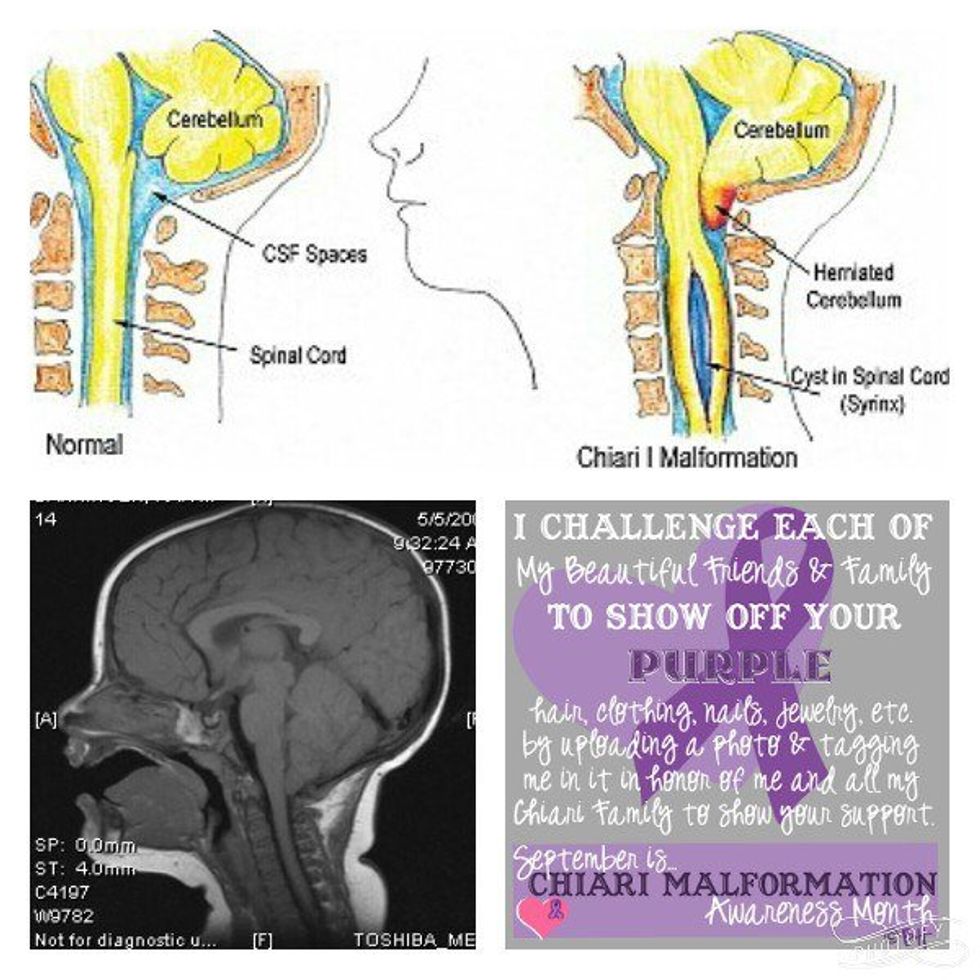1. Chiari malformations are, for the most part, congenital defects (meaning you're born with it).
2. Chiari malformations are also known as Arnold-Chiari malformations (mainly for the Type II malformation).
3. Chiari malformations are, at their simplest definition, when person's cerebellar tonsils come down through the foramen magnum (the hole in the base of the skull), resulting in an obstruction of cerebrospinal fluid (a.k.a. the clear body fluid in your brain and spine), which can cause a non-communicating, abnormal accumulation of cerebrospinal fluid within the brain.
4. Symptoms of Chiari malformations include (but are not limited to) headaches, fatigue, muscle weakness, vomiting, dizziness, neck pain, speech problems, abnormal breathing, and balance problems. In severe cases, paralysis is possible.
5. There are four types of Chiari malformation: Types I, II, III, and IV.
6. Type I is when only the cerebellar tonsils extend downward into the foramen magnum (without any brain stem tissue), is the most common form of Chiari malformation, and is the only type of Chiari malformation that can actually be acquired.
7. Type II, the most common Chiari malformation type, is when both the cerebellar tonsils and brain stem tissue extend downward into the foramen magnum and is usually accompanied by a form of spina bifida at birth.
8. Type III is the most serious form of Chiari malformation, where the cerebellum and brain stem (and sometimes the brain's fourth ventricle) protrude through the foramen magnum, causing severe neurological defects.
9. Type IV is a very rare Chiari malformation which, although the cerebellar tonsils are in their normal position, involves an underdeveloped cerebellum, which can cause parts of the skull and spinal cord to be visible due to missing parts of the cerebellum.
10. There are roughly 200,000 cases of Chiari malformations diagnosed in the U.S. every year.
11. Chiari malformations are more likely to occur in women than men.
12. Type II malformations are more likely to be more prevalent in certain groups, including those of Celtic descent.
13. Many people living with Chiari malformations don't even realize it until they're on course for diagnosis and treatment for another disorder.
14. The exact cause of the Chiari malformations remains unknown, but the current hypothesis is that it is caused by problems during fetal development that can impair brain function, such as exposure to hazardous substances, improper diet and nutrition, infection, and prescription or illegal drug and alcohol consumption.
15. September is Chiari Awareness month. Wear purple to show your support for those with this disease!





















